If your clothes dryer breaks down, have no fear – you’re likely able to fix it up yourself and skip the costly dryer repair services. In order to repair it yourself, you’ll need to order the right parts and disassemble your dryer. Before you begin taking it apart, it’s important to first diagnose the common dryer problems.
Let’s dig into the details.
Dryer repair troubleshooting
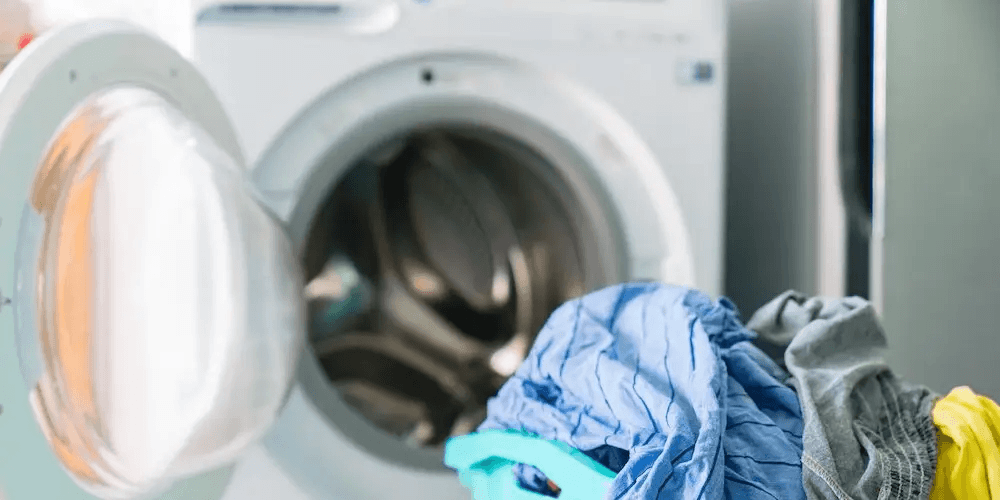
Image source: Reader's Digest
No power
If your dryer won't turn on, check the plugs and circuit breakers to make sure the fuse isn't blown. For gas dryers, make sure the pilot light is lit. For electric dryers, check the voltage of the power cord as well and replace it if necessary. Most dryers have a voltage of 240 volts, but this can vary depending on the brand. Another potential cause could be the thermal fuse, which will also disrupt the power if it's blown.
Shuts off quickly
If your dryer turns on but shuts off quickly, you may need to replace the motor or drive belt. You may even hear a buzzing sound before the motor gives out.
Won't spin
If your dryer heats but won't spin, you'll likely need to replace the belt that connects to the motor.
Noises
If you hear knocking noises or vibrations, your dryer could be off-balance. You'll need to make sure it is level by adjusting the legs and making sure all the screws are tight.
Won't heat
If it’s taking longer than usual to dry clothes or there’s no heat at all, first make sure to check the dryer vents and lint filters are unclogged. There could also be a variety of other reasons including a problem with the heating element, thermal fuse, thermostat, or timer motor.
How to repair your dryer
There are several elements of your dryer that may need fixing. We provide a step-by-step guide on how to repair the most common dryer problems.
Thermal fuse
Replacing the thermal fuse is one of the easier DIY repairs you can make to your dryer. The thermal fuse acts as a safety device to prevent your dryer from overheating. Typically, you'll also need to replace the thermal fuse if there's no heat. Once you've bought the replacement thermal fuse for your dryer, it's time to get to work.
Tools you'll need:
- Putty knife or flathead screwdriver
- Nut driver (?, 5/16, or ¼ inch)
- Screwdriver
- Socket wrench
Step-by-step thermal fuse repairs
1. Turn off gas and unplug the dryer
2. Remove back panel. Depending on the dryer brand you have, use a nut driver or screwdriver to remove the back panel of the dryer.
3. Locate thermal fuse and remove wires
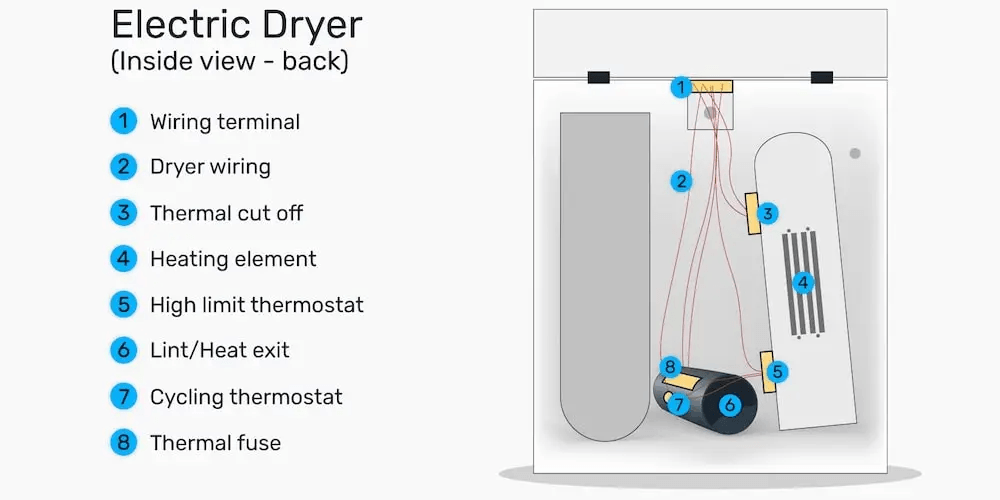
Once you’ve removed the back panel, the inside of your dryer should look something like this. Locate the thermal fuse, which should be near the blower housing at the bottom. Carefully remove the wires from the fuse and remove the mounting screw with the nut driver.
4. Remove the old fuse and install a new one
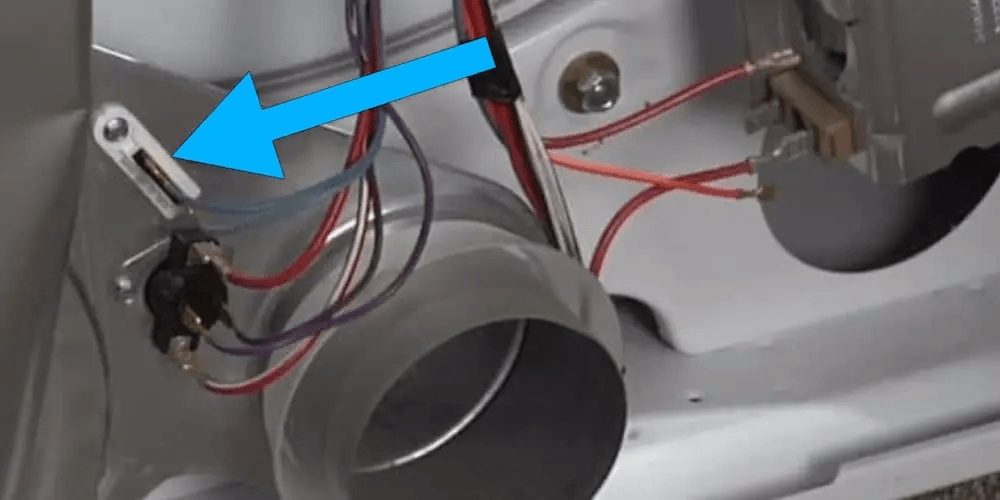
Once you’ve removed the mounting screw, pull off the old fuse and re-secure the new one. Then reconnect the wires to the new fuse and screw the back panel on.
Drum belt
The belt wraps around the dryer drum and the motor pulley, which rotates the belt, which then rotates the drum. If your dryer isn't rotating, heating, or not turning on at all, replacing the drum belt can solve some of the most common dryer issues. Just remember that before you order a replacement part, belts differ in sizes depending on each major brand like Samsung, Bosch, Whirlpool, Kenmore, and Maytag, so be sure to look up your model number.
Tools you'll need:
- Phillips head screwdriver
- Nut driver
- Putty knife or flathead screwdriver
Step-by-step drum belt repairs
1. Unplug your dryer
2. Remove the top panel

Image source: Reviewed
If your dryer has a lint screen, make sure to remove that first. Then, take your putty knife and slide it under the top panel and push up to unlock the two clips on either side. Lift the top panel and lean it against the wall.
3. Disconnect door switch

Image source: PartSelect
Next, use your putty knife to release the locking tabs on both sides of the door switch until you can disconnect it.
4. Remove front panel
With your nut driver, you’ll first need to remove the screws on the inside. Then you can lift the front and gently pull it out.
5. Remove belt and drum
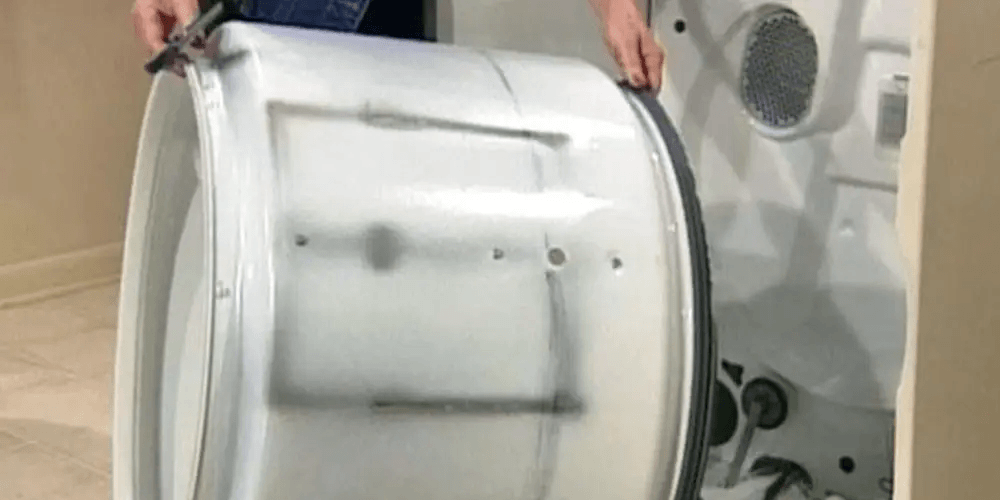
Image source: DIY Network
Once you’ve removed the front panel, you’ll need to remove the belt from the motor pulley system. Accessibility can be tricky, but you can support the drum with your shoulder and push the idler down or to the right to loosen the tension of the belt. Then, you’ll be able to remove the belt off the motor which will allow you to also remove the drum and the idler pulley.
6. Install new belt and reassemble
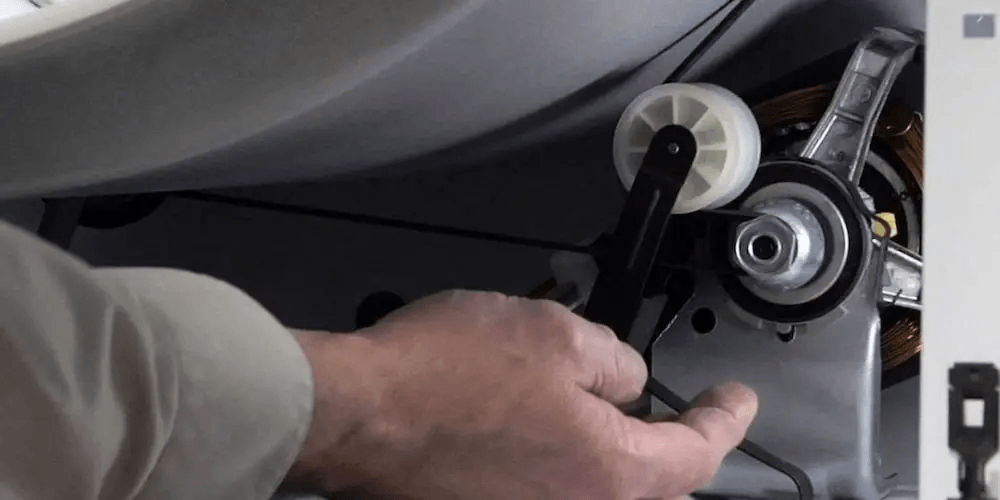
Image source: Wonder How-To
Wrap the new belt around the drum and slide it back in. Support the drum again with your arm or shoulder while you put back the idler pulley and wrap the belt around it. Then wrap the belt around the motor and let the drum rest against the motor and give it a spin.
Heating element
Whether you have an electric or gas dryer, replacing the heating element isn't terribly difficult either. You'll have to remove the back panels and disconnect the high limit thermostat and the wires.
Tools you'll need:
- Nut driver
- Flathead screwdriver
Step-by-step heating element repair
1. Unplug dryer
2. Remove back panel. Just like with replacing the thermal fuse, you’ll need to unscrew the back panel of the dryer and pull it off.
3. Locate the heating element and remove wires
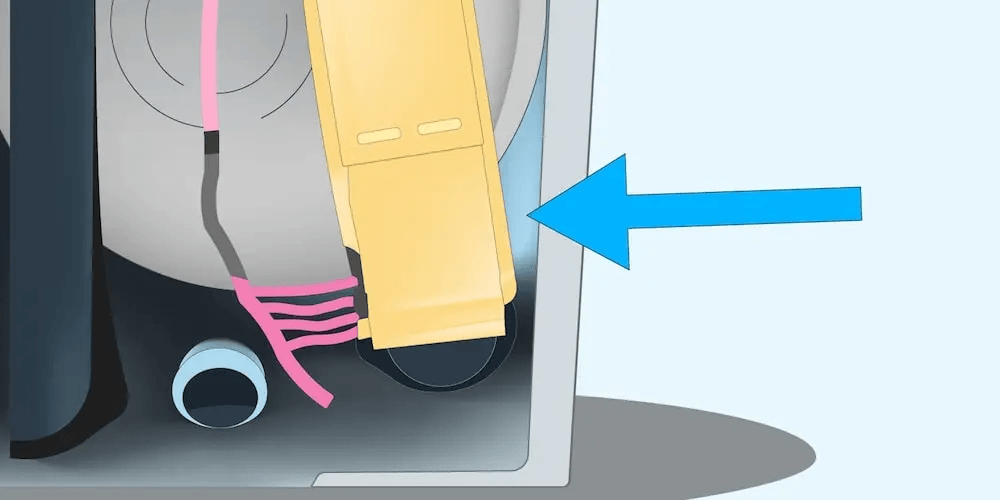
Once you’ve removed the back panel, locate the heating element towards the bottom of the dryer. Remove the wires to the terminal block and high limit thermostat.
4. Remove and replace the heating element
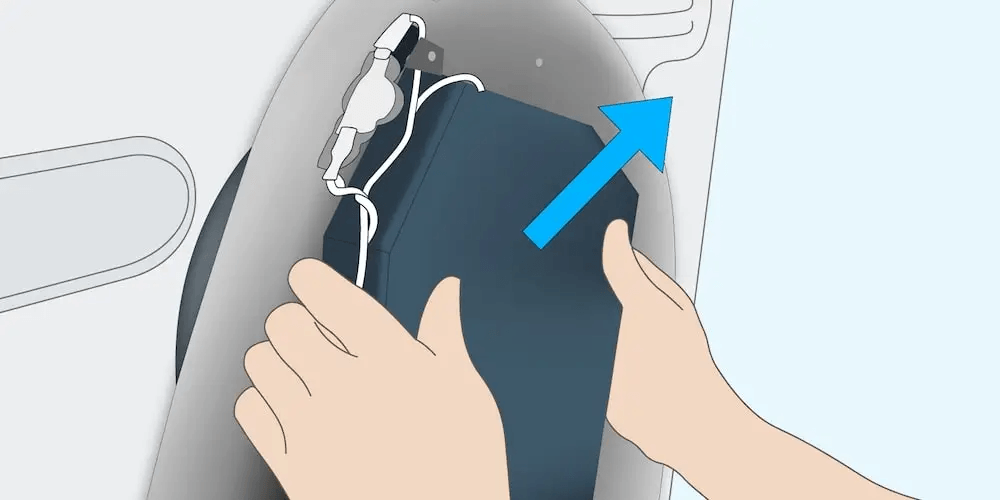
Next, use your nut driver to unscrew the heating element and slide it out. If you turn it over, you’ll see the electrical coils that heat your dryer. Take your new heating element, slide it back in, re-tighten the screws, place the high-limit thermostat back on the hook, plug in the wires, and reassemble the back dryer panel.
How to maintain your dryer
Typically washers and dryers last an average of 10 years, with some lasting up to 25 years. To maximize your home appliances' lifespan, it's important to properly maintain your dryer as much as possible. Here are several tips that could help.
Clean lint traps
Ignoring the lint traps can lead to potential fires and potentially lead to blowing the thermal fuse. Thousands of house fires in the U.S. are caused by dryers, most of which were due to lint buildup. Make sure to routinely check your lint traps, remove the screen, and use a brush to clean the trap.
Clean your exhaust vent
Exhaust vents should be cleaned out once a year or so. Cleaning out the exhaust vent can also avoid fires. Remove the vent from the back of the dryer and clean out any lint build-up.
Don't overload
One of the more common problems with both washing machines and dryers is overloading them. Overloading a dryer not only prevents your clothes from drying but also uses more energy and can potentially burn out the motor.
Dryer repair: in summary
If you’re on a tight budget and your washer and dryer are no longer under warranty, any type of appliance repair service can be an inconvenience. Dryer and washer repair can cost between $100 and $450, depending on the scope of the repair. But even with the most common problems, it is possible to make repairs yourself and avoid buying a new dryer. Although repairs may differ between brands, this guide will help you to make the most common repairs.
Chris Gennone is a content specialist and video producer at Fixr.com. He has 5 years of experience writing and editing for a variety of web and print publications, currently specializing in home improvement projects such as roofing, remodeling, and repairs. When Chris isn’t writing or in front of the camera, he’s either playing with his band or tracking down the best sandwich shops.
